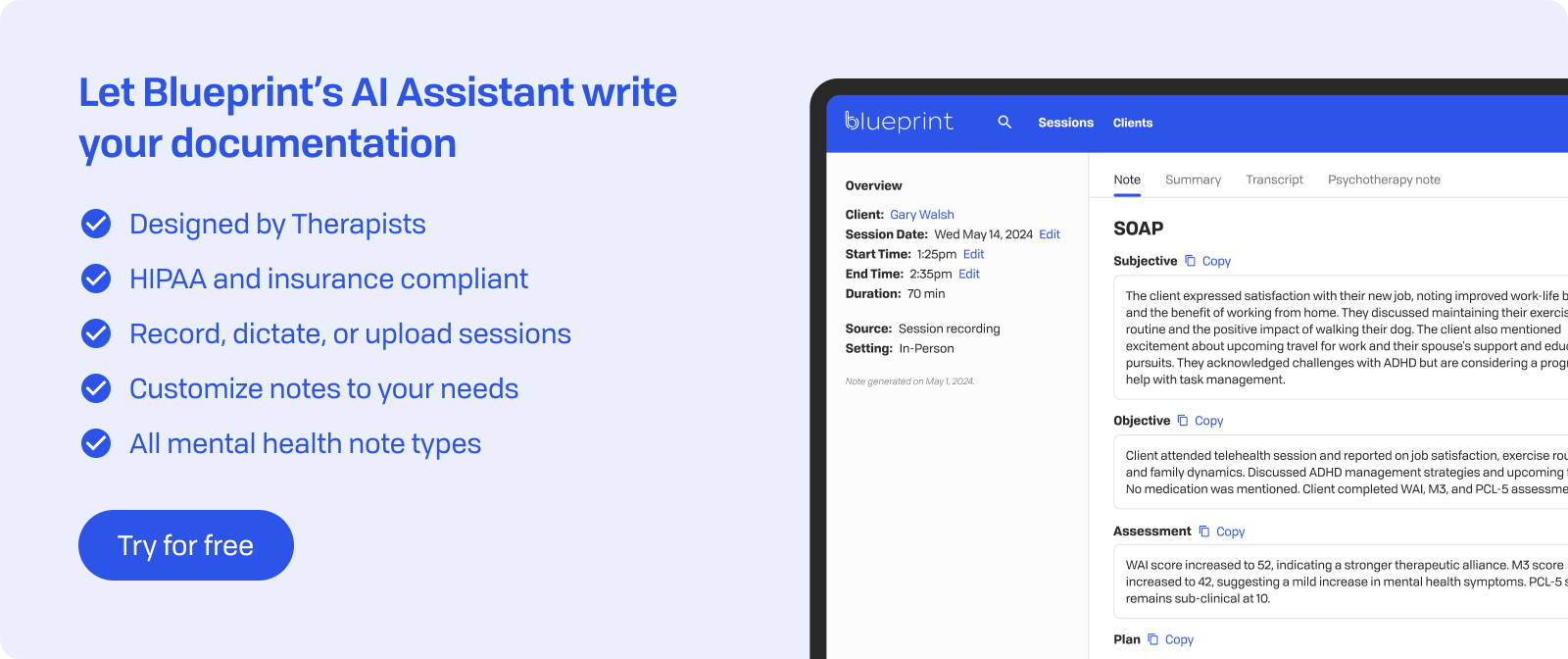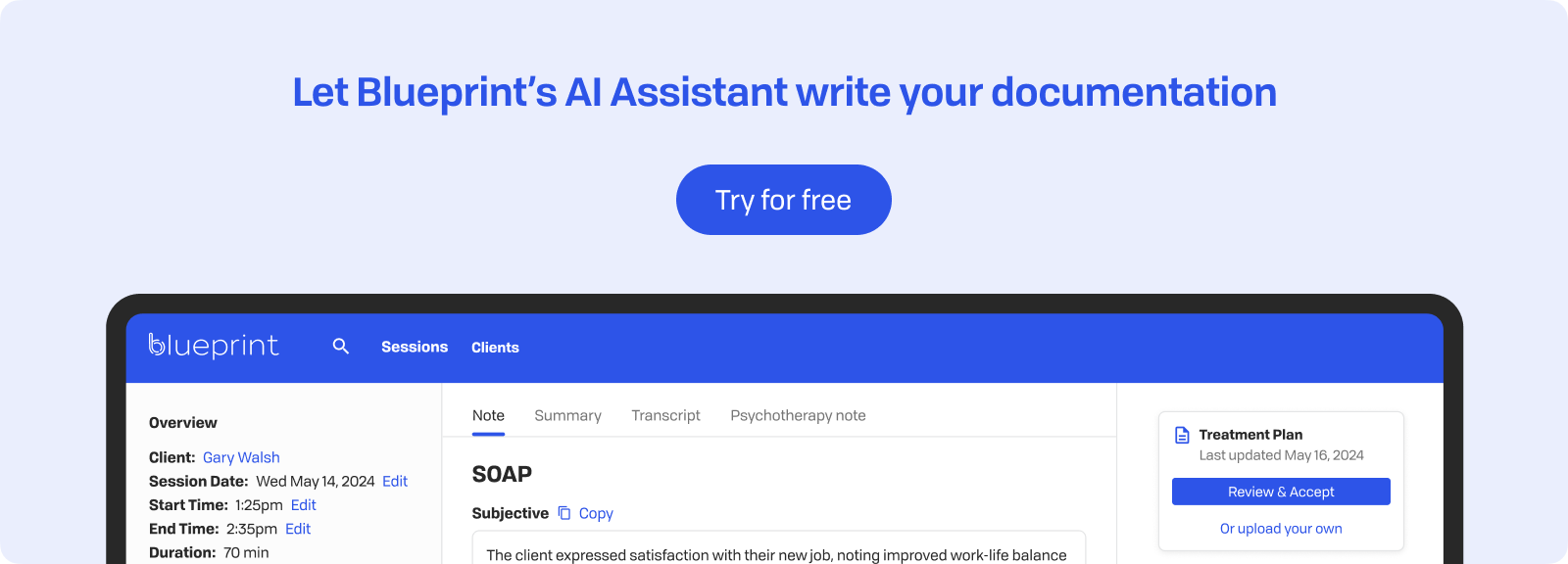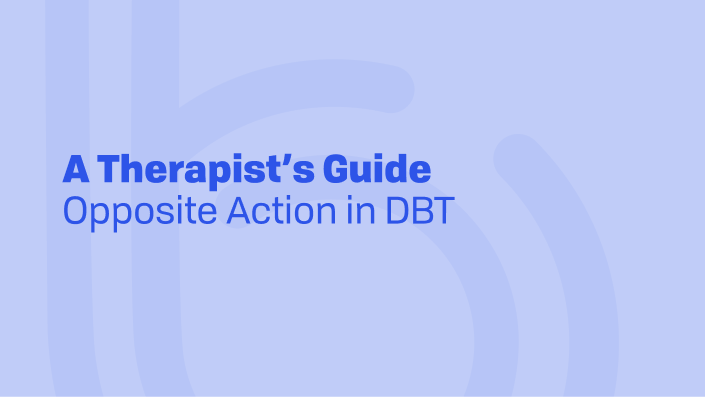In Brief
When emotions run high, we often act on instincts that feel right at the moment but ultimately worsen the situation. Think about the last time a client avoided a social event because of anxiety, only to feel more isolated afterward. Or consider how anger might drive someone to lash out, harming relationships they care about.
This common therapeutic challenge—where emotional urges mislead us—highlights the importance of certain DBT skills in clinical practice. Sometimes, the most effective way forward involves doing what feels counterintuitive. This approach can change how clients handle intense emotions and escape self-defeating patterns.
Among the emotion regulation skills in DBT, one technique stands out for its simplicity and effectiveness in these situations. The Opposite Action Worksheet encourages clients to challenge their automatic reactions and choose a different path—one that might feel uncomfortable initially but leads to better outcomes.
What Is Opposite Action in DBT?
Opposite action is a key skill in the Emotion Regulation module of DBT. It involves deliberately doing the opposite of an emotional urge. When a client's emotional response doesn't match the facts or becomes unhelpful, acting opposite can lessen distress and emotional intensity.

Theoretical Foundations & Behavioral Mechanisms
Marsha Linehan developed Opposite Action as part of Dialectical Behavior Therapy, based on functional-contextual behavioral science. This skill draws from established behavioral principles, adding a unique perspective that balances acceptance with change.
The mechanism behind opposite action resembles other evidence-based behavioral interventions:
- Behavioral Activation: Like BA for depression, opposite action counters mood-driven withdrawal and inactivity. When sadness urges isolation, engaging socially serves as behavioral activation.
- Exposure Therapy: The skill functions as exposure when addressing fear-based avoidance. Approaching rather than escaping anxiety-provoking situations reduces fear intensity through habituation.
- Response Prevention: Similar to ERP in OCD treatment, opposite action interrupts automatic behavioral patterns that maintain emotional distress.
What sets opposite action apart in DBT is its integration with dialectical philosophy—acknowledging that emotions are valid while recognizing that acting on every emotional urge isn't always effective. This creates a combined approach: validating the emotion while choosing a different behavioral response.
The skill operates through several behavioral mechanisms:
- Incompatible Response Training: Engaging in behaviors that conflict with the emotional urge (smiling when angry, standing tall when ashamed)
- Extinction Learning: Repeated opposite actions weaken the connection between emotional triggers and habitual responses
- Emotional Regulation Through Action: Physical behaviors influence emotional states through feedback loops
This behavioral foundation makes opposite action particularly effective for emotions that don't fit the facts or when emotional intensity exceeds what's helpful for the situation.
Recognizing When Opposite Action Is Appropriate
Deciding when to apply opposite action requires a thoughtful evaluation of your client's emotional state and circumstances. This approach works best in particular scenarios where emotions drive unhelpful behaviors.
Key Reasons to Use Opposite Action:
- Disproportionate emotions: When the emotional intensity doesn't align with the facts of the situation (such as excessive fear about a safe presentation or disproportionate anger over minor inconveniences).
- Emotion-driven urges that worsen problems: Withdrawing when feeling depressed, avoiding anxiety-triggering but important activities, or lashing out when angry.
- Persistent high-intensity emotions: Overwhelming feelings that disrupt daily functioning or hinder treatment goals.
- Behaviors that amplify negative emotions: Actions that create feedback loops, like isolation increasing sadness or avoidance strengthening fear.
When to Consider Other Approaches:
Safety concerns need immediate attention through crisis intervention rather than opposite action. If a client expresses suicidal urges or self-harm intentions, focus on safety planning and appropriate DBT crisis skills. Similarly, when emotions are proportionate to the situation, such as grief after a loss or fear in genuinely dangerous circumstances, it is important to validate and process these emotions rather than change behavior.
Quick Assessment Questions:
1. Is the emotion's intensity helpful or harmful at this moment?
2. Does acting on this urge bring the client closer to or away from their values?
3. Will the usual response make the emotion stronger or weaker?
4. Is the client stable and safe enough to try a new approach?
Research shows that opposite action is particularly effective for sadness and shame, with mixed results for anger and anxiety.

Step-by-Step: Using Opposite Action with Clients
Teaching opposite action involves a methodical approach that helps clients recognize emotional patterns and choose more effective responses. Here's how to guide your clients through this valuable DBT skill:
Step 1: Identify and name the specific emotion. Help your client pinpoint exactly what they're feeling. Use emotion wheels or feeling charts if needed. Encourage specificity; words like "disrespected" instead of just "upset," or "ashamed" instead of "bad."
Step 2: Check the facts—does the emotional intensity match the situation? Guide clients to examine whether their emotional response fits the actual circumstances. Ask questions like: "Is the intensity helpful here?" or "Does this emotion match what's happening?"
Step 3: Identify the emotional urge. Encourage clients to notice their body language and impulses. What does the emotion want them to do? Common urges include avoiding (fear), attacking (anger), hiding (shame), or withdrawing (sadness).
Step 4: Determine the appropriate opposite action. Work together to find a behavior that directly opposes the urge. If anger says "yell," the opposite might be speaking softly. If shame says "hide," the opposite could be maintaining eye contact.
Step 5: Commit fully and act intentionally. Emphasize complete engagement. Half-hearted attempts won't work as well and often feel inauthentic. Set a specific timeframe for the opposite action and encourage clients to immerse themselves in it completely.
Step 6: Observe the emotional outcome and reinforce with practice. After implementing opposite action, reflect together on changes in emotional intensity, thoughts, and physical sensations. Document what worked in your progress notes to build confidence for future use.

Typical Emotional Urges and Opposite Actions
Knowing the specific urges that accompany different emotions helps therapists guide clients toward effective opposite actions. Here's a practical reference for the most common emotional patterns you'll encounter in practice:
Anger
- Typical urge: Attack, confront, or lash out verbally/physically
- Opposite action: Step away from the situation, speak softly, relax your face and hands, or perform a kind act toward the person
Sadness
- Typical urge: Withdraw, isolate, stay in bed, avoid activities
- Opposite action: Reach out to others, engage in enjoyable activities, maintain your routine, or offer support to someone else
Fear/Anxiety
- Typical urge: Escape, avoid the feared situation, freeze
- Opposite action: Approach the situation (when safe), stay present, make eye contact, speak up in meetings or social gatherings
Shame
- Typical urge: Hide, avoid eye contact, slump posture, apologize excessively
- Opposite action: Stand tall with shoulders back, maintain appropriate eye contact, discuss mistakes matter-of-factly without over-apologizing
Disgust
- Typical urge: Push away, reject, express contempt
- Opposite action: Approach or stay near the source, keep a neutral facial expression, find something tolerable about the situation
These opposite actions work best when clients commit fully to the new behavior. Half-hearted attempts rarely reduce emotional intensity. The aim isn't to suppress emotions but to prevent unhelpful behavioral patterns from increasing distress.
Clinical Applications and Troubleshooting
Bringing opposite action into your clinical practice involves careful planning and an awareness of common challenges. While it fits well within emotion regulation modules of DBT-informed therapy, its uses go beyond traditional DBT environments.
Implementation Strategies:
- Diary cards: Have clients track emotional intensity ratings (0-10) before and after trying opposite action. This helps them see real progress and figure out which emotions are most responsive to the technique.
- Exposure protocols: Use opposite action as a behavioral component in anxiety treatment. When clients face feared situations, they are already practicing opposite action.
- Behavioral activation: For clients dealing with depression, opposite action works alongside BA by offering a clear method to counter withdrawal urges.
Common Challenges and Solutions:
- Lack of belief: Clients might not trust the skill's effectiveness. Begin with low-stakes emotions and document small successes to build their confidence.
- Half-hearted attempts: Highlight that partial engagement is often less effective. Use role-play to help clients practice full commitment before applying it in real situations.
- Emotional escalation: This happens when clients misidentify emotions or use opposite action for justified emotions. Always verify the correct emotion and check if the emotion aligns with the facts.
- Neurodivergent considerations: Some clients may need tailored approaches. Break opposite actions into smaller steps and allow more practice time.
Critical Success Factors:
Accurate emotion identification is key. Misidentifying anger as anxiety, for example, can lead to ineffective opposite actions. Incorporate self-validation and self-care practices to prevent burnout from overusing the skill. Remember, opposite action changes behavior to adjust emotions, not to suppress or invalidate feelings.
Regular discussions about outcomes reinforce learning and help tailor strategies based on what works for each client's unique emotional patterns.

Teaching Opposite Action to Clients: Therapist Tips
Helping clients learn and effectively use opposite action involves thoughtful teaching strategies. Here are practical approaches to aid skill acquisition:
Role-Play for Skill Building: Develop scenarios that reflect your client's real-life triggers. Practice identifying emotions together and then act out both the usual urge and its opposite. For example, role-play a situation involving criticism where anger prompts confrontation—then practice responding with a calm, measured tone instead.
Validation Plus Action: Recognize and acknowledge your client's emotions while promoting behavioral flexibility. Use phrases like: "Your anger makes complete sense given what happened. Let's see how acting in the opposite way might help you feel less overwhelmed by it."
Coaching-Style Prompts: Encourage full commitment with specific guidance:
- "Lean into it without holding back”
- "Give this your all for the next 10 minutes"
- "Align your body language with the opposite action"
Practical Tools for Daily Use
- Pocket cards: Make small reference cards listing emotions and their opposite actions
- Weekly worksheets: Monitor emotion intensity before and after using the skill
- Phone reminders: Set alerts to practice opposite action during predictable trigger times
- Visual cues: Place sticky notes with opposite action reminders in important locations
Integration Strategies: Begin with low-stakes emotions during sessions before addressing intense real-world situations. Assign specific opposite action tasks between sessions, focusing on one emotion at a time. Review outcomes together, celebrating successes and addressing challenges without judgment.
Keep in mind that clients often need several practice rounds before engaging in opposite action feels natural. Your ongoing encouragement and structured approach help bridge the gap between understanding the concept and applying it effectively.
Key Takeaways
Opposite action is one of the most adaptable emotion regulation skills in DBT, providing clients with a tangible way to break harmful emotional-behavioral cycles. This technique is particularly useful when emotions don't align with the facts or when emotional intensity disrupts daily activities.
Core strengths of opposite action:
- Quick emotional relief: Studies indicate that behavioral interventions through opposite action can alleviate depressive symptoms more swiftly than cognitive approaches alone
- Applicable to various emotions: Effectively addresses anger, sadness, fear, shame, and disgust when used correctly
- Strengthens emotional resilience: Regular practice forms new neural pathways that diminish automatic emotional responses
- Improves interpersonal effectiveness: Reduces impulsive reactions that can harm relationships
Important success factors:
- Correct emotion identification: Identifying emotions correctly leads to more effective opposite actions
- Complete commitment: Committed and immersed attempts lead to more meaningful change
- Regular practice: Like any skill, proficiency requires repetition and refinement
- Appropriate timing: Using opposite action for appropriate emotions can invalidate genuine experiences
Keep in mind that opposite action complements other DBT skills and works best within a comprehensive treatment approach that includes validation, distress tolerance, and mindfulness practices.
The skill's power lies in its straightforwardness—modifying behavior to influence emotions instead of waiting for emotions to change first. When thoughtfully integrated into treatment, opposite action enables clients to respond deliberately rather than react impulsively. This transition from automatic responses to conscious choices builds the foundation for lasting emotional regulation and improved quality of life.

How Blueprint can help streamline your workflow
Blueprint is a HIPAA-compliant AI Assistant built with therapists, for the way therapists work. Trusted by over 50,000 clinicians, Blueprint automates progress notes, drafts smart treatment plans, and surfaces actionable insights before, during, and after every client session. That means saving about 5-10 hours each week — so you have more time to focus on what matters most to you.
Try your first five sessions of Blueprint for free. No credit card required, with a 60-day money-back guarantee.
























